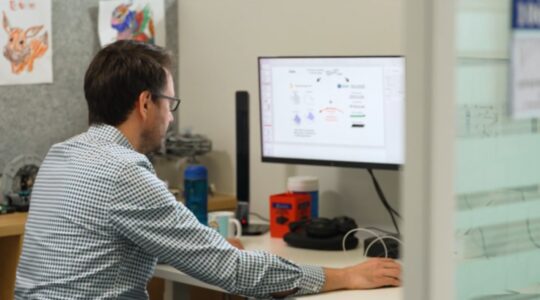Shapeshifting machines depicted in the Transformers movies are becoming reality in a California University a short drive away from Hollywood.
A team of Caltech engineers have developed a robot that can morph in midair like Optus Prime and Bumblebee.
Study lead author Ioannis Mandralis said specialised robots existed that could both fly and drive, but they typically touched down on land before attempting to transform and drive away.
“But when the landing terrain is rough, these robots sometimes get stuck and are unable to continue operating,” Mr Mandralis said.
He said the Caltech team had developed a “real-life Transformer” that had the “brains” to morph in midair, allowing the dronelike robot to roll away and begin its ground operations without pause.
Mr Mandralis said the increased agility and robustness of such robots could be useful for commercial delivery systems and robotic explorers.
He said the new robot, dubbed ATMO (aerially transforming morphobot), used four thrusters to fly, but the shrouds that protected them became the system’s wheels in an alternative driving configuration.
“The whole transformation relies on a single motor to move a central joint that lifts ATMO’s thrusters up into drone mode or down into drive mode.”
Mr Mandralis said nature had inspired the design, as the team studied the way animals could use their bodies in different ways to achieve different types of movement.
“For example, birds fly and then change their body morphology to slow themselves down and avoid obstacles.
“Having the ability to transform in the air unlocks a lot of possibilities for improved autonomy and robustness.”
He said the midair transformation posed challenges, with complex aerodynamic forces coming into play both because the robot was close to the ground and because it was changing its shape as it morphed.
“The system uses an advanced control method called model predictive control, which works by continuously predicting how the system will behave in the near future and adjusting its actions to stay on course.
“The control algorithm is the biggest innovation in this paper,” Mr Mandralis said.
Read the full study: ATMO: an aerially transforming morphobot for dynamic ground-aerial transition.








